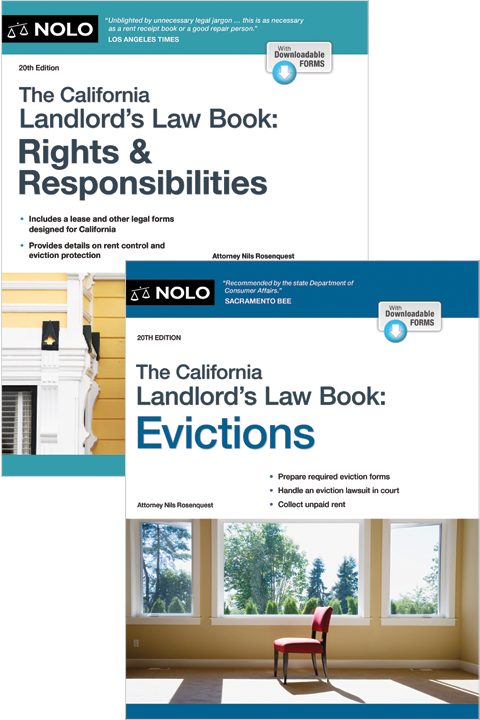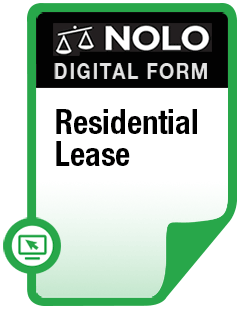Small landlords who qualify for this safe harbor can currently deduct expenses that might otherwise be considered improvements.
Landlords may currently deduct in a single year the cost of building repairs, but must depreciate over several years the cost of building improvements. Unfortunately, telling the difference between an improvement and a repair is often in the eyes of the beholder and has led to many landlord disputes with the IRS over the years. However, life is getting a little easier for many residential landlords. The IRS has established a new safe harbor rule that allows them to currently deduct many expenses that might otherwise be considered improvements.
The safe harbor for small taxpayers (SHST; IRS Reg. §1.263(a)-3h) took effect at the start of 2014. If you qualify to use it, you may currently deduct on Schedule E all your annual expenses for repairs, maintenance, improvements, and other costs for business real property, including rental property owned by landlords. However, there are significant restrictions on who may use this safe harbor.
To take advantage of this safe harbor, landlords need to keep careful track of all their annual expenses for repairs, maintenance, improvements and similar items--something they should be doing anyway.
Only Smaller Landlords May Use the SHST
As the name implies, the SHST is intended to be used by business owners with relatively small businesses. Thus, there are strict limits on the value of buildings that may qualify under the safe harbor, and on the annual amounts the building owners can spend and earn. You cannot use this safe harbor in any year any of these limits are exceeded. But, so long as you come within these limits, you may use the SHST for any number of rental buildings or units—you are not limited to just one.
$1 Million building value limit
The SHST may be used only for buildings—including condos and coops--with an unadjusted basis of $1 million or less. Thus, it can't be used for many larger apartment buildings or other more expensive rental buildings. "Unadjusted basis" usually means a building's original cost (also called its cost basis), not including the cost of the land.
To determine a building's unadjusted basis, you don't subtract the annual amounts you deduct for depreciation. But you add the value of any improvements you make to the building while you own it and that you are depreciating along with the rest of the building.
If you own more than one rental unit or building, the $1 million limit is applied to each separately. Thus, for example, a landlord with 10 rental buildings each with an unadjusted basis of less than $1 million could use the SHST for each of them.
Annual expense limit
A landlord may use the SHST only if the total amount paid during the year for repairs, maintenance, improvements, and similar expenses for a building does not exceed the lesser of $10,000 or 2% of the unadjusted basis of the building. This limit is determined on a building by building basis—for example, if you own three rental homes, you apply the limit to each home separately.
The 2% of the adjusted basis rule means that a building with basis of greater than $500,000, but not more than $1,000,000, will still have the $10,000 annual limit.
The limit is applied on a per building basis. Thus, if you own two or more rental buildings, you may be able to use the SHST for some, but not others.
Annual Income limit
Finally, to qualify for the SHST a landlord must have average annual gross receipts of no more than $10 million during the three preceding tax years. Gross receipts include income from sales (unreduced by cost of goods), services, and investments. This poses no problem for smaller landlords.
Claiming the SHST
The small taxpayer safe harbor must be claimed anew each year by filing an election with your timely filed tax return, which is due by October 15 each year (if you obtain an extension of time to file). Thus, you can use the SHST for amounts paid during 2014 by filing the election with your 2014 tax return, which must be filed no later than October 15, 2015 (if you obtain an extension of time to file).
You can claim the SHST for some years and refrain from doing so for other years—it's entirely up to you. The SHST is also claimed on a building-by-building basis. Thus, if you own more than one rental building, you can claim the SHST for some rental buildings and not use it for others.
There is no IRS form for this election. However, it is a very simple document you can easily create yourself and attach to your return. If the rental property covered by the SHST is owned by a partnership, limited liability company, or S corporation, the election must be made by the business entity, not by the individual partners, LLC members, corporate shareholders. Once this annual election is made, it may not be revoked for the year it covers.
Example of SHST In Action
Sam owns a single family home that he rents out. It has a $100,000 unadjusted basis (that is, it cost $100,000). During 2014, he paid $200 to a plumber to fix a leak, repaired a window for $400, and replaced the home's water heater for $1,200. Sam qualifies for the small taxpayer safe harbor because the $1,800 he spent on repairs, improvements, and maintenance during 2014 is less than 2% of his building's unadjusted basis (2% x $100,0000 = $2,000). By filing an election to use the SHST, Sam may currently deduct the entire $1,800 on his 2014 IRS Schedule E. This is so whether or not any of these expenses, such as the water heater replacement, might constitute an improvement under the more complicated IRS repair rules that apply in the absence of a safe harbor.
Talk to a Lawyer
Need a lawyer? Start here.
How it Works
- Briefly tell us about your case
- Provide your contact information
- Choose attorneys to contact you
- Briefly tell us about your case
- Provide your contact information
- Choose attorneys to contact you



